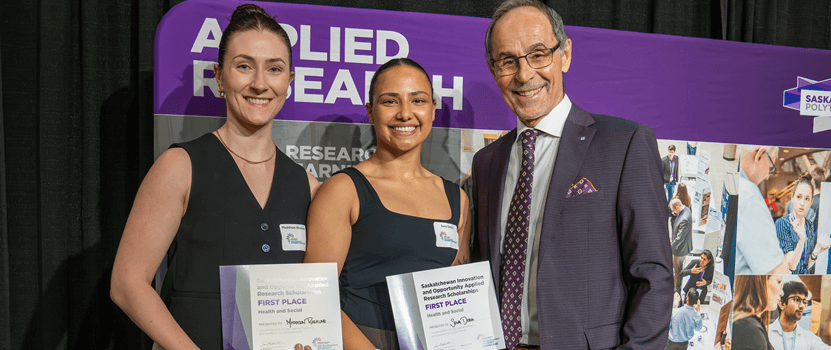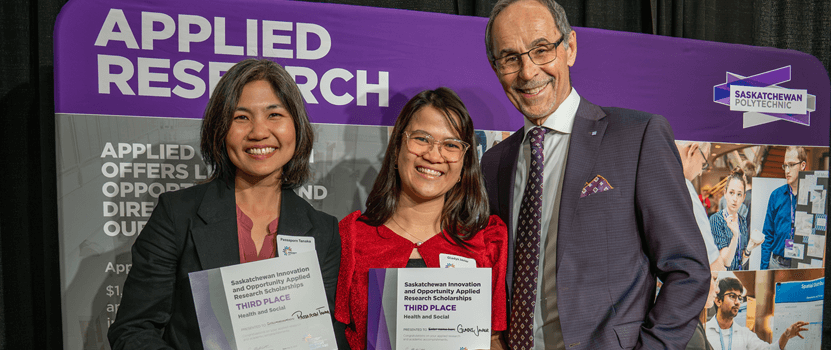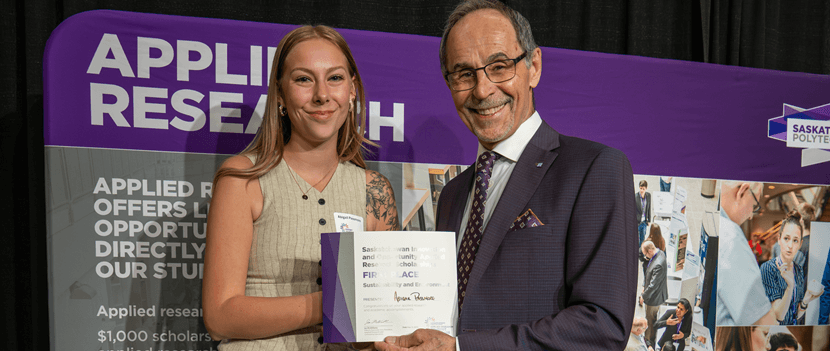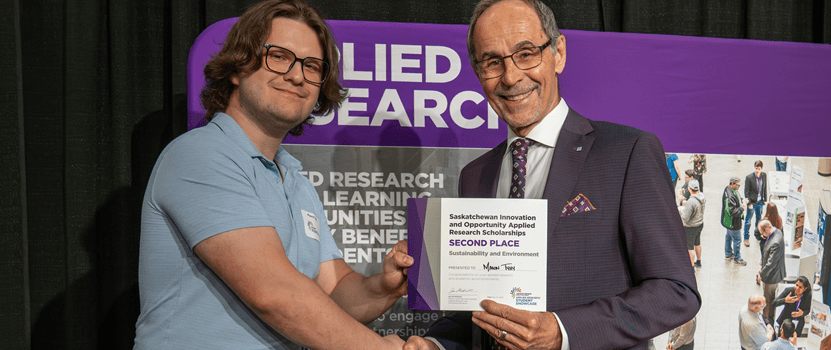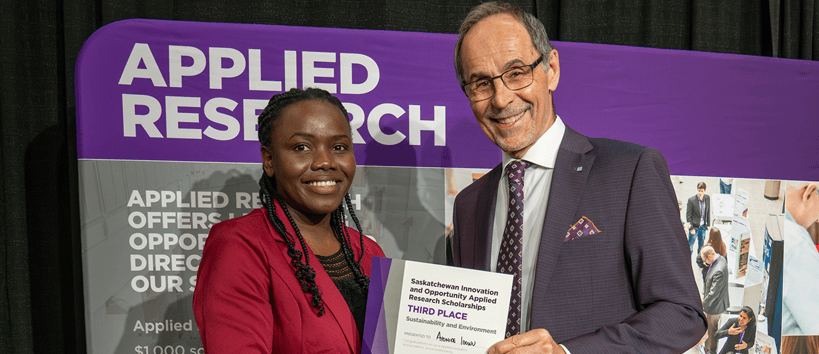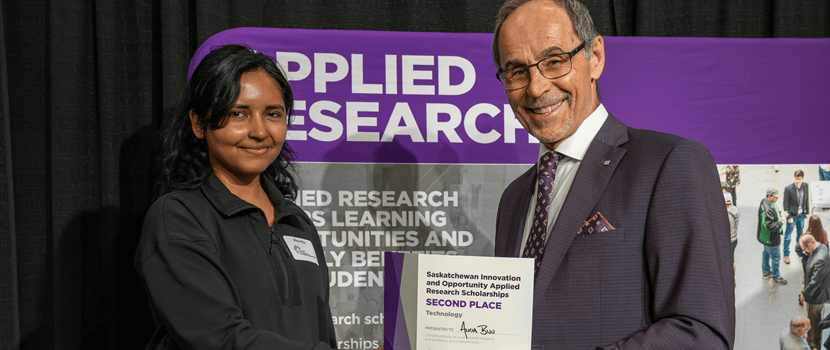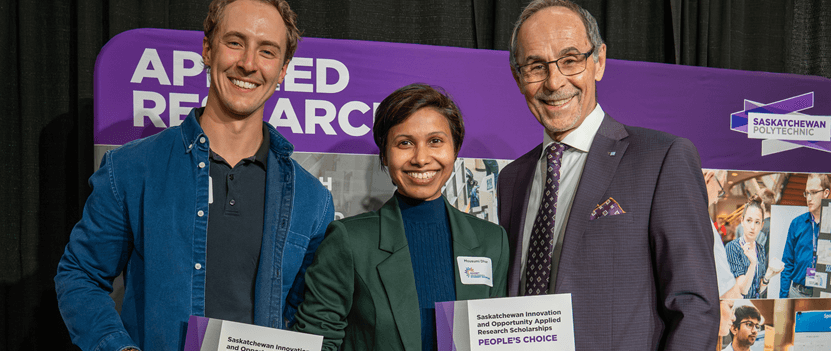
May 13, 2025 - Over 100 students shared applied research projects focused on solving real-world problems at Saskatchewan Polytechnic’s Applied Research Student Showcase.
As part of the showcase, the projects were adjudicated by faculty, industry and community partners, with winners selected in several categories. Altogether, 115 students took part.
“Congratulations to each of the students in this year’s showcase,” says Dr. Larry Rosia, Sask Polytech president and CEO. “It's inspiring to see the amazing projects on which our faculty and students have collaborated with engaged industry partners. Projects like these confirm Sask Polytech’s growing reputation in the applied research arena, proving yet again that with our dynamic students we are leading the rise of polytechnic education.”
Student projects demonstrated practical and innovative solutions to industry challenges. These hands-on, real-world opportunities give Sask Polytech students an advantage in the workplace.
“The enthusiasm and commitment demonstrated by students in collaborating with industry partners and the broader community is truly commendable,” says Dr. Ian McWilliams, associate vice-president, Applied Research and Innovation. “It reminds us of the profound impact of applied research in shaping our community and beyond.”
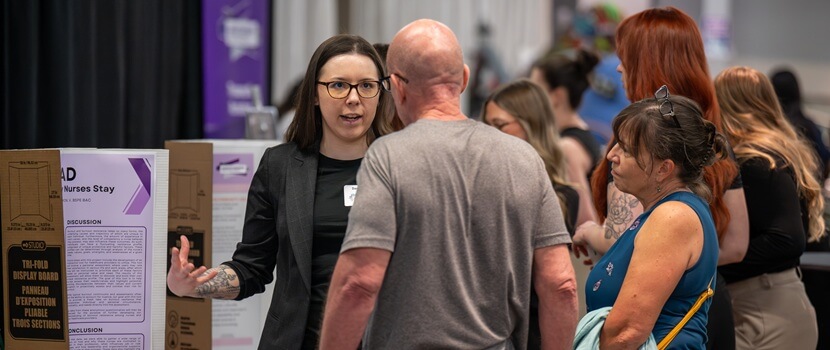
Eighty-four students received scholarships to support their research. Students received up to $1,000 from the Saskatchewan Innovation and Opportunity Applied Research Scholarship, funded by the Government of Saskatchewan. Other students presented capstone projects, which are final assignments and part of their academic program; or student research conducted through the Digital Integration Centre of Excellence (DICE), Sustainability-Led Integrated Centres of Excellence (SLICE) and Centre for Health Research, Innovation & Scholarship (CHRIS).
2025 Applied Research Student Showcase winners
| Health and Social | |
|---|---|
| First ($1,000) |
Sena Debia & Maddison Rheaume Description: This project aims to evaluate the cultural services offered to Indigenous mothers and families during the perinatal period at three maternal health centres in Saskatchewan: Saskatoon’s Jim Pattison Children Hospital Maternal Care Centre, Fort Qu’Appelle’s All Nations Healing Hospital’s Women’s Health Centre and Regina General Hospital’s Mother Baby Unit.
|
| Second ($800) |
Eduardo Jimenez & Preetul Anthony Correia Description: Our research project focuses on the development of the Caker Care Home Portal App, an integrated technology solution aimed at addressing critical challenges in senior care homes, such as operational inefficiencies, communication gaps and resident isolation.
|
|
Third |
Gladys Javier and Passaporn Tanaka Description: This research provides a comprehensive review of the importance of outdoor and nature play and identifies the barriers to outdoor and nature play in early learning programs. It intends to explore approaches that help educators build positive attitudes toward the outdoor and nature play and suggest how they can overcome those obstacles and successfully embed outdoor and nature play as a part of their early learning curriculum.
|
| Sustainability and Environment | |
|---|---|
|
First |
Abigail Passmore Description: Cover cropping in agriculture refers to the practice of planting specific crops primarily to benefit the soil and the farming ecosystem, rather than for harvest or economic profit. This is a novel practice in Saskatchewan, used to address issues such as imbalances in soil nutrition and decreasing soil microbial diversity. This project provides insight on how cover crop species affect the soil fertility parameters of Prince Albert soils.
|
|
Second |
Mason Tyhy Description: This project involved optimizing lab practices in Mosaic's QC laboratory to improve consistency in their reported saturation data analyzed on ICP. This involved testing a number of different parameters to find the most optimal form of each, and then a comparison of this method was performed against Mosaic's usual method, both short and long term.
|
|
Third |
Ayomide Idowu Description: The viscosity of guar gum is crucial as a depressant during the flotation stage of potash production, it directly influences the purity of the potash being produced. The viscosity of the old guar gum was investigated in comparison to the new guar gum using a viscometer. Furthermore, the solvent medium was investigated to determine the solvent medium that favors the depression of insoluble clay.
|
| Technology | |
|---|---|
| First ($1,000) |
Treyton Frasz, Tyler Bomboir, Arhaan Saeed & Elliot Wagner Description: The students are creating an innovative information hub for the residents of Moose Jaw. In the first phase, they will manage the flower bed area and monitor crowds at the city’s recreation center using advanced computer vision models.
|
| Second ($800) |
Alicia Biju Description: This project involves the redesign of an aeroponic tower using sustainable materials and 3D printing. It aims to create a cost-effective, modular system that improves water efficiency, supports diverse crop growth and reduces long-term maintenance. The design integrates structural and mechanical enhancements to provide a scalable, eco-friendly solution for modern agriculture.
|
|
Third |
Reggie Busby Description: Modern smart outlets provide the user with on/off control, power monitoring, and if especially elegant, an automated system to turn the plug on or off. The smart outlet project will provide a much higher level of control over the power consumed for a desired load. This project implements a TRIAC circuit to rapidly turn the 60Hz waveform on and off to vary the amount of power that a load can consume. This allows for higher control over the power and for power to be used without unnecessary waste.
|
| People's Choice | |
|---|---|
|
People's Choice –tied |
Mousumi Dhar Description: The ParkSmart Saskatoon project aims to develop an AI-powered platform that provides real-time parking availability using camera-based vehicle detection. By reducing time spent searching for parking, the system helps lower traffic congestion, fuel usage and emissions. The goal is to enhance urban mobility and sustainability in Saskatoon by delivering a scalable, privacy-aware solution that improves parking efficiency and supports smarter city planning. Daxton Ursu Description: The effects a wildfire has on certain soil properties to gain a better understanding of these natural disturbances as their size, intensity and frequency is expected to rise in coming years. A forestry company may use the information obtained if planting in a burned area
|
Thank you to Innovation Saskatchewan for sponsoring the awards, SaskWheat for providing meals and Crestline for their generous support of the Applied Research Student Showcase.
 |
 |
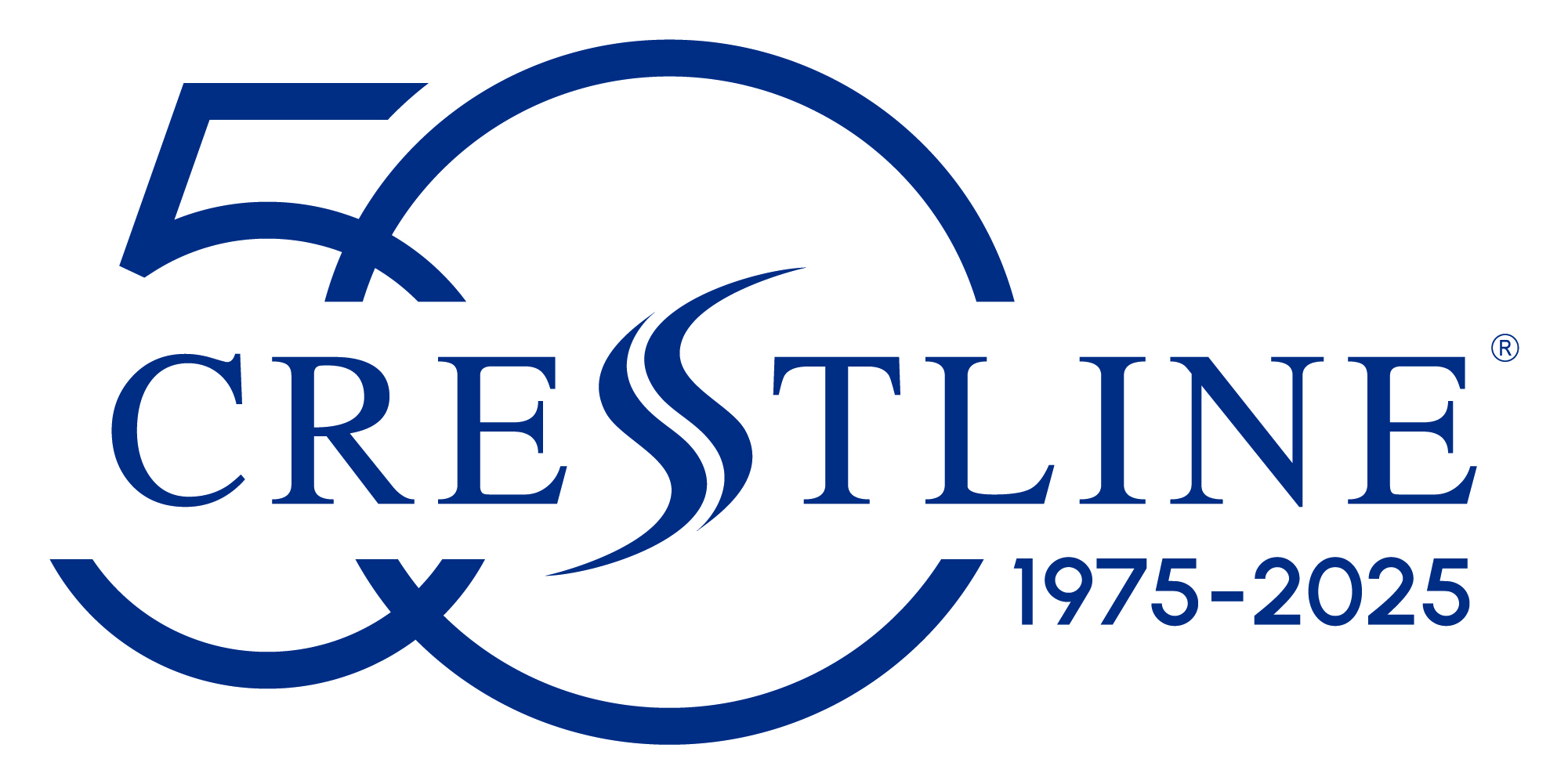 |
Sask Polytech's award-winning applied research transforms ideas into practical solutions. Faculty, researchers and students collaborate with the private and public sector on applied research projects. These projects take many forms including product development, process design, technology adoption and proof of concept. Using state-of-the-art facilities, equipment and faculty expertise Sask Polytech delivers solutions and helps industry to capture new opportunities. Intellectual property for all applied research projects is retained by industry, creating more incentive for future creative engagement and ongoing collaboration.
Sask Polytech is always looking to create more work-integrated learning opportunities for our student researchers. If you have a business challenge you need assistance with, please contact us.
Learn more at saskpolytech.ca/research.
Saskatchewan Polytechnic is signatory to the SDG Accord. Sustainable Development Goal alignment is one of the ways Sask Polytech is leading the rise of polytechnic education.






